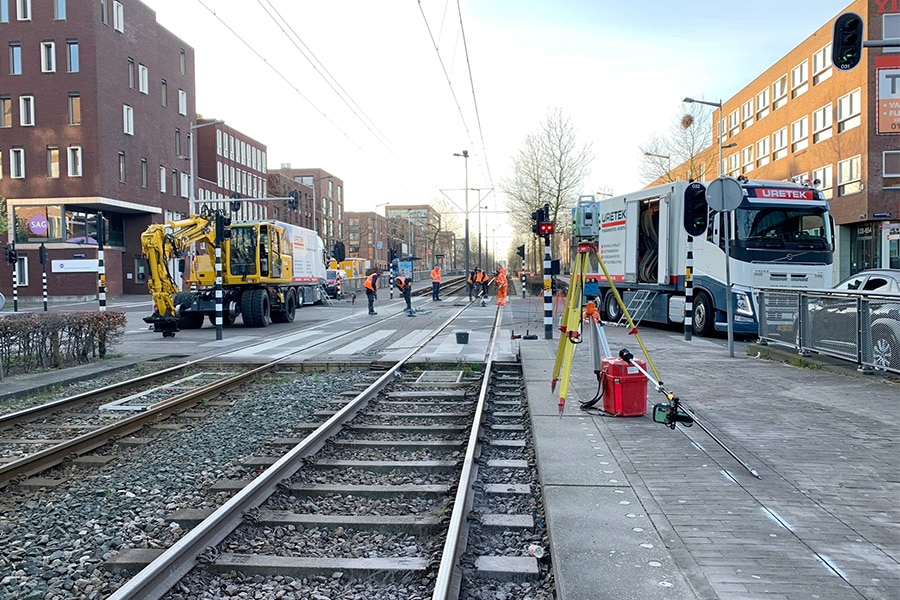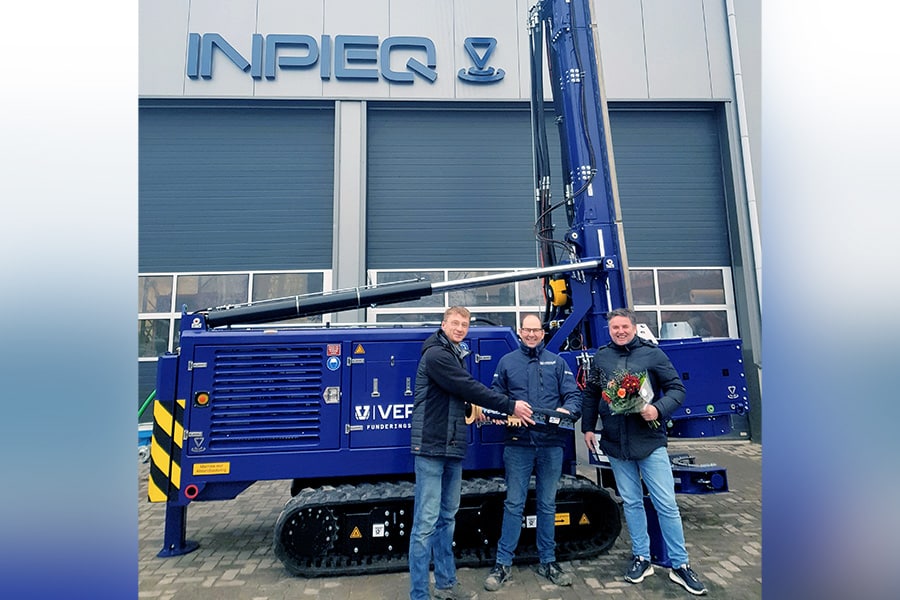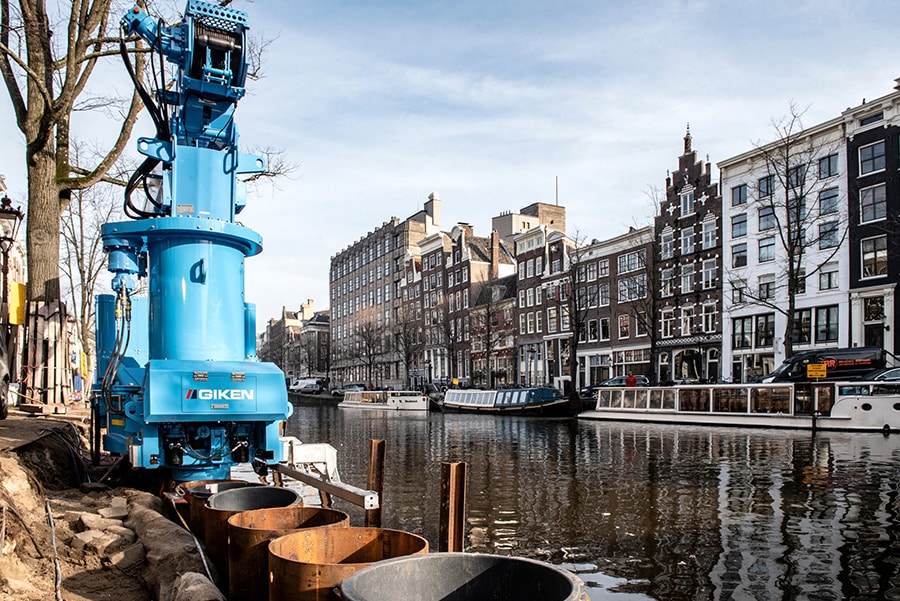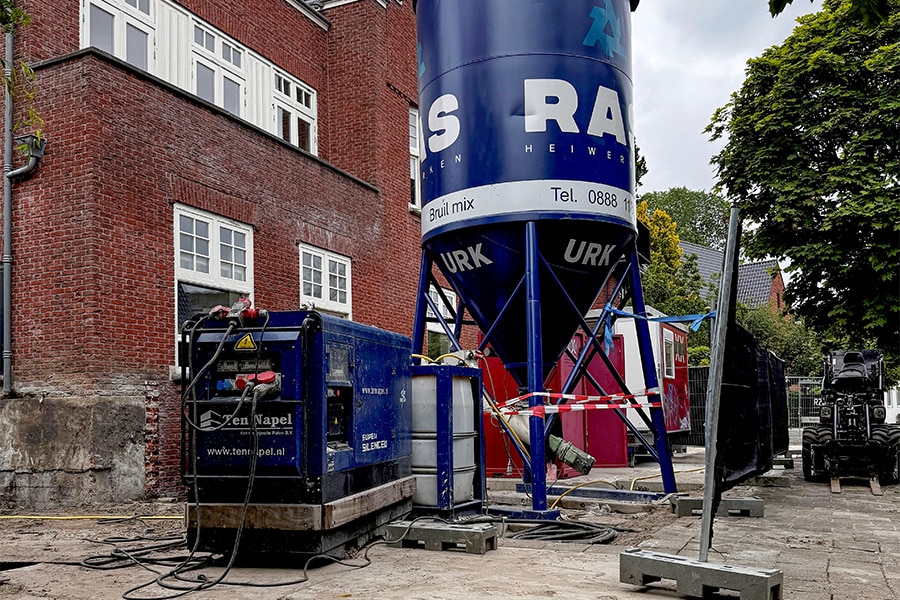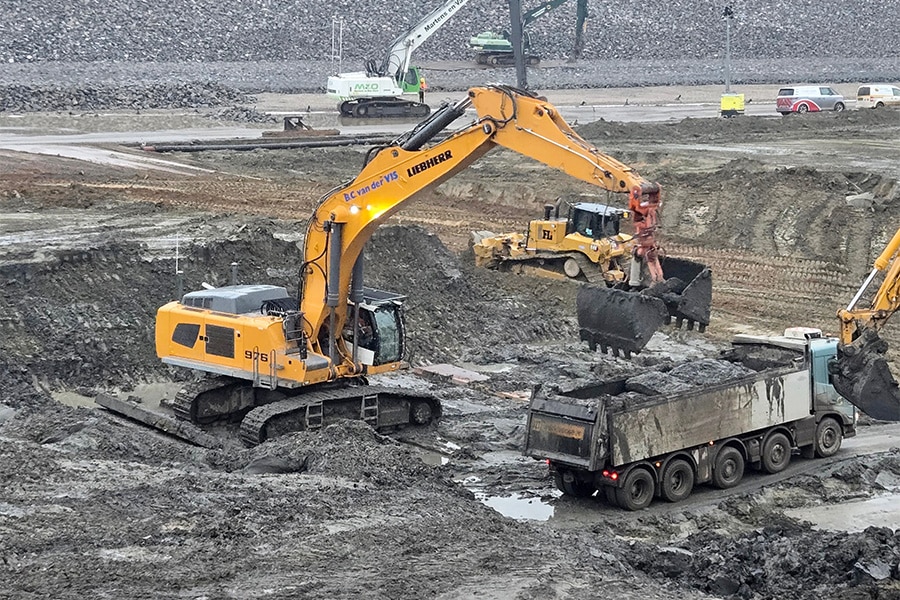
BC van der Vis develops unique soil press for disposal of sludge Juliana Canal
Berto van der Vis, owner of eponymous earth-moving company BC van der Vis, is in charge of section North of the Juliana Canal. This work section poses an extra challenge given the enormous amount of contaminated silt. Berto: "It is constantly puzzling with the planning and equipment needed."
Since mid-August last year, more than a hundred machines have been working daily in the Juliana Canal. "The amount of work in section North is enormous," Berto says. "The focus is on April when the first ships have to pass through the canal again. To make that possible, we have deployed additional equipment since the beginning of the year. The work has been scaled up and we are now sailing with 22 ships to remove the silt, there are 27 trucks and 10 dumpers coming and going, 25 cranes, a soil press and 3 ships loading plants. There are now 100 people working daily for work section North, from skipper to driver. The best professionals are at work here." Within vak Noord, four earthmoving companies work together: Van den Herik-Sliedrecht, Ermers grondverzet, FL-BV and BC van der Vis. Berto is the second generation of Van der Vis. He has worked in the past as a freelancer for the big dredging companies such as Boskalis, Van Oord and Van den Herik. "Because of the good relationship with Van den Herik, I was asked to take on the daily management for vak Noord. It's a spectacular job if you look at the amount of work. You're doing something that hasn't been done before, so it's certainly not an everyday job."
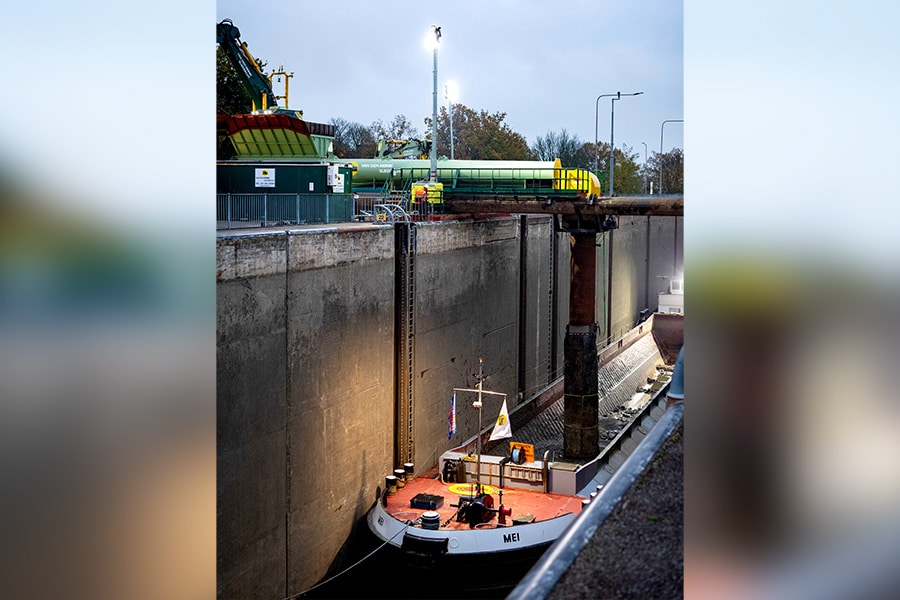
Soil Press
What is also not commonplace is the soil press with which the polluted sludge from the lock quay in Born is dosed into the ships. An invention created by Berto and also named after him: Earth press 2.0 Berto. "Designing and building the soil press was certainly special. The sludge has to be transported horizontally and watertight. You start puzzling with possibilities and forces about what should and can be done. From my experience and architectural background, the design for the earth press came out of that: 25 meters long, 4 meters high and 1.25 meters wide. In less than four weeks it was built."
Own machines
On the job, Berto also has several of his machines with operators working. Including two 90-ton excavators with grapple buckets, a 90-ton crane that loads rocks into a dumper, a 20-meter crane for profiling work and a 30-ton crane for loading gravel into the dumpsters.
The sky is the limit
The cooperation with Van den Herik is as usual according to Berto. "The nice thing is that at Van den Herik they give you a lot of space to interpret your work yourself. They don't think in boxes, it's more like 'the sky is the limit'."
